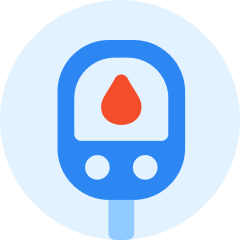What are the types of hypertension? What causes this condition? In order for us to know, it is important to know what hypertension is exactly.
Hypertension is the medical term for high blood pressure.
Blood pressure refers to the pressure that blood applies to the inner walls of your arteries. Arteries carry blood from the heart to the different parts of the body. But even with its high prevalence, the main causes of the disease are yet to be found.
Doctors, instead, have determined factors that increase the likelihood of acquiring hypertension.
`
Hypertension or high blood pressure afflicts many people worldwide.
The result is a classification of a condition which the World Health Organization describes as a worldwide epidemic.
In the Philippines alone, 1 out of 3 Filipinos aged eighteen and above are already hypertensive, according to the Philippine Heart Association.
But not all cases of Hypertension are the same. Did ][kyou know that there are different classifications of hypertension?
What are the types of hypertension? Each kind of hypertension is determined by its cause, and this, in turn, determines how the disease can be managed.
So what are the types of hypertension? Read on to learn more about them.
What is Hypertension?
Hypertension, or high blood pressure, is a long-term health condition that describes the elevated levels of blood pumping through your arteries. This condition could lead to heart attack, heart failure, or even a stroke if left unaddressed.
< >
High blood pressure is a long-term condition, and it can be present for years without causing any obvious symptoms.
The elderly are more at risk of developing this condition, due to their slower metabolism.
This is why it is important to always have a medical checkup as you age.
You can also monitor your blood pressure at home with a specialized device called a digital sphygmomanometer.
How to Read a Sphygmomanometer

A sphygmomanometer is a device that reads blood pressure.
Normal blood pressure rests at a reading of less than 120 over less than 80. Consistently higher counts mean you may have hypertension.
The top number is called systolic, meaning the pressure in the arteries produced whenever your heart beats.
The lower one is called diastolic, meaning the pressure in the arteries produced during the relaxation of the heart between heartbeats.
What Are the Stages of Hypertension?
What are the types of hypertension? Before we answer that question, it is important to know the different stages of this condition.
Blood pressure readings are essential for determining how high or low your blood pressure is. This also determines if you can self-manage the condition, or if you need to visit a doctor immediately.
Hypertension has four stages:
- Normal: a systolic/diastolic reading of less than 120/80
- Elevated: a reading between 120-129 systolic and less than 80 diastolic
- Stage 1: 130-139 systolic and 80-89 diastolic
- Stage 2: at least 140 systolic and at least 90 diastolic
If your blood pressure is elevated or higher and you have heart disease or diabetes, it is recommended that you seek treatment to lower your blood pressure immediately.
Talk to your doctor about how you can lower your blood pressure. Now let us answer the question: what are the types of hypertension?
What Are the Types of Hypertension?
There are five types of hypertension:
1. Primary Hypertension
Primary hypertension, also called essential hypertension, is the most common form of high blood pressure. This type of hypertension is especially prevalent in adults and the elderly. This is likely the result of numerous genetic and environmental factors, exerting multiple compounding effects on cardiovascular function.
In general, the risk for hypertension increases for people 50 years of age and upwards, but in this type, there is no single identifiable cause of high blood pressure. However, there are a number of symptoms which are normally associated with it:
- Headaches
- Vertigo
- Tinnitus (ringing of the ears)
- Fainting
- Nosebleeds
- Changes in vision
- Chest pain
- Muscle tremors
It’s important to note that exhibiting these symptoms does not necessarily mean you have hypertension. However, these symptoms may also occur too late, when the blood pressure reaches life-threatening levels.
2. Secondary Hypertension
Secondary hypertension means that there is a disease or a preexisting condition which causes high blood pressure. More specifically, this disease keeps your heart rate elevated, due to the disease’s nature. In most cases, these causes coexist with risk factors for primary hypertension and need to be treated to achieve blood pressure control.
Diseases that can cause secondary hypertension include:
- Thyroid disorders such as hyperthyroidism and hypothyroidism
- Kidney and adrenal diseases
- Congenital blood vessel disorders (e.g. coarctation of the aorta)
- Tumors
- Alcoholism
- Obstructive sleep apnea
- Certain medications such as oral contraceptives, chronic use of painkillers, decongestants, and antidepressants
- Illegal drugs such as methamphetamines
3. Resistant Hypertension
Resistant hypertension is defined as blood pressure that is not controlled despite adherence to an appropriate regimen of three anti-hypertensive medications of different classes, in which all drugs are prescribed at suitable doses. Simply put, blood pressure that requires at least four medications to achieve control is considered controlled resistant hypertension.
This type of hypertension is chronic and often requires medication to control.
Many patients who appear to have resistant hypertension actually have pseudo-resistance rather than true resistance.
Pseudo-resistance can result from the following problems:
- Inaccurate blood pressure measurement
- Poor adherence to medications
- Poor adherence to lifestyle changes and dietary modifications
- Sub-optimal dosage of anti-hypertensive therapy
- White-coat hypertension – hypertension induced during clinic visits
4. Hypertensive Emergency
Hypertension emergency is defined as a significantly elevated blood pressure (systolic pressure above 180 and/or diastolic pressure above 120 mmHg) with signs of ongoing target-organ damage.
Patients with this blood pressure but without symptoms are classified as hypertensive urgency. People with this condition usually present with sudden agitation, loss of consciousness, visual disturbances, nausea or vomiting, one-sided weakness, chest pain, or difficulty of breathing.
This condition warrants immediate treatment in the emergency room setting.
5. Isolated Systolic Hypertension
Isolated systolic hypertension is defined as a systolic blood pressure above 160 mmHg with a diastolic blood pressure below 90 mmHg.
It is most frequent among people sixty years old and above, and is caused by diminished arterial compliance or stiffening of arteries brought about by age.
What are the Factors that Increase the Risk of Hypertension?
Now that we have answered the question “what are the types of hypertension?” let us now turn to learning the factors that increase hypertension risk.
Even though primary hypertension has no identifiable causes, there are a number of factors that increase the risk of high blood pressure.
These factors, when combined, could lead to an earlier onset of hypertension, or inevitably lead to hypertension in later years.
These factors are as follows:
- Genes
If your family has a history of cardiovascular diseases, there is a risk that you might develop these conditions as well. However, this could also be due to a shared family environment, such as similar diet and lifestyle, in addition to hereditary traits.
African-Americans, for instance, are more at risk of acquiring hypertension at a much younger age because of genetic and environmental factors.
- Lifestyle
An unhealthy lifestyle could lead to hypertension. For example, excessive smoking and drinking can put extra pressure on your heart and arteries. They can also affect your kidneys and lungs, which in turn increase the likelihood of high blood pressure.
- Diet
Our diet plays a large role in determining our blood pressure levels. Salt, or more specifically sodium, plays a factor in the health of our body’s arteries.
Excessive sugar consumption, on the other hand, could lead to diabetes and obesity. Consuming either in excessive quantities could lead to an increased risk of hypertension.
- Weight
Obesity increases the risk of high blood pressure. The heavier we are, the more pressure it takes for our heart to pump blood all over the body.
In turn, weight loss decreases the risk substantially. For nearly eight pounds of fat lost, the risk of hypertension reduces by as much as 50 percent and upwards.
- Age
Blood pressure can rise as you get older. The risk increases if you are in your 50s and higher. The body’s metabolism also slows down at this point, making it harder for the heart and other organs to function efficiently.
- Physical inactivity
Physical inactivity increases the risk of hypertension. Inversely, exercise is effective in lowering blood pressure.
Key Takeaways
There are many factors of hypertension that determine the risks involved. In secondary hypertension, the causes are clearly from other diseases. The treatment, as such, involves curing the underlying diseases. However, in the case of primary hypertension, the cause remains to be identified. As a result, it is best to adopt healthy practices in order to prevent or reduce hypertension.
[embed-health-tool-heart-rate]
























